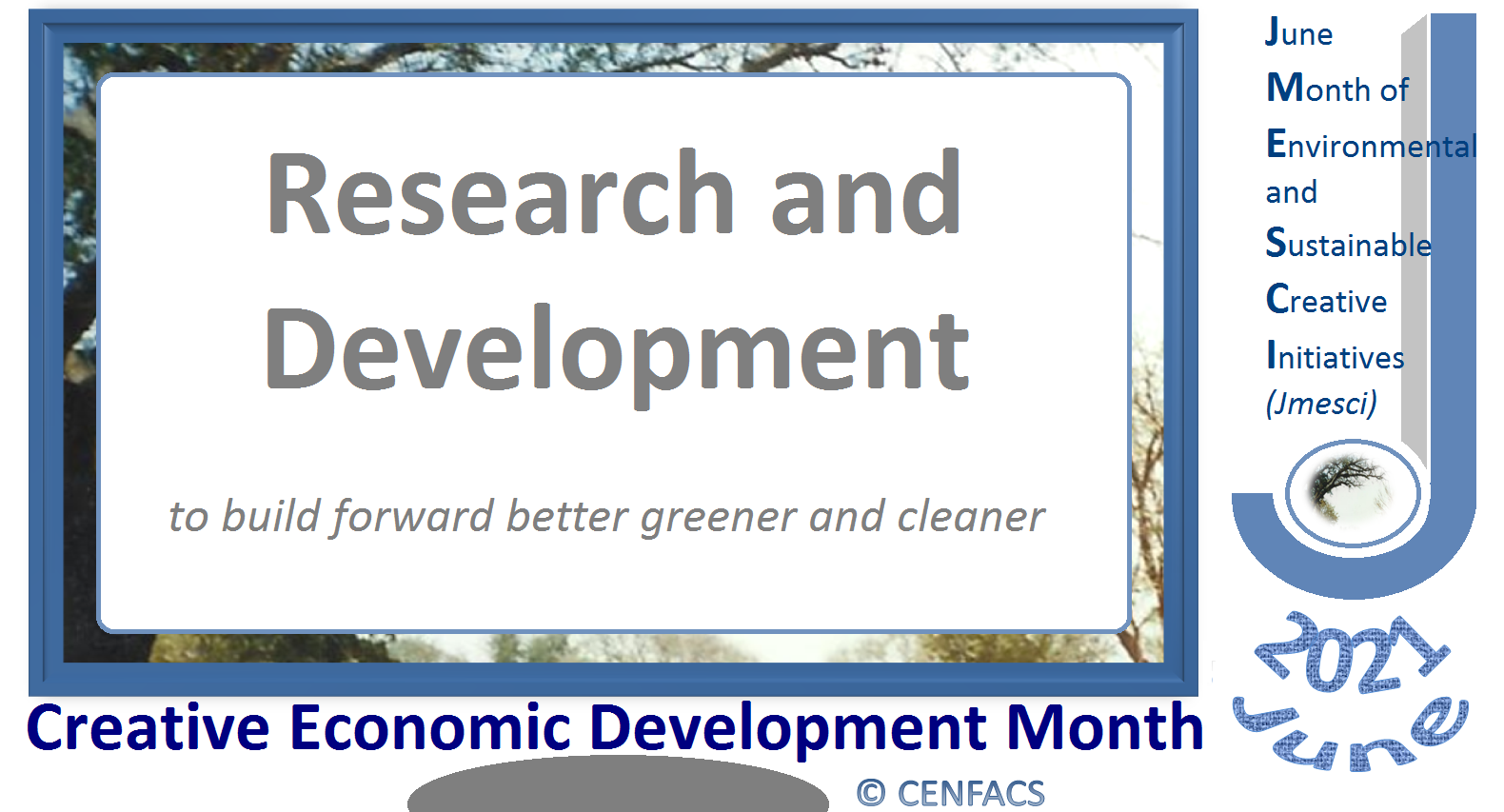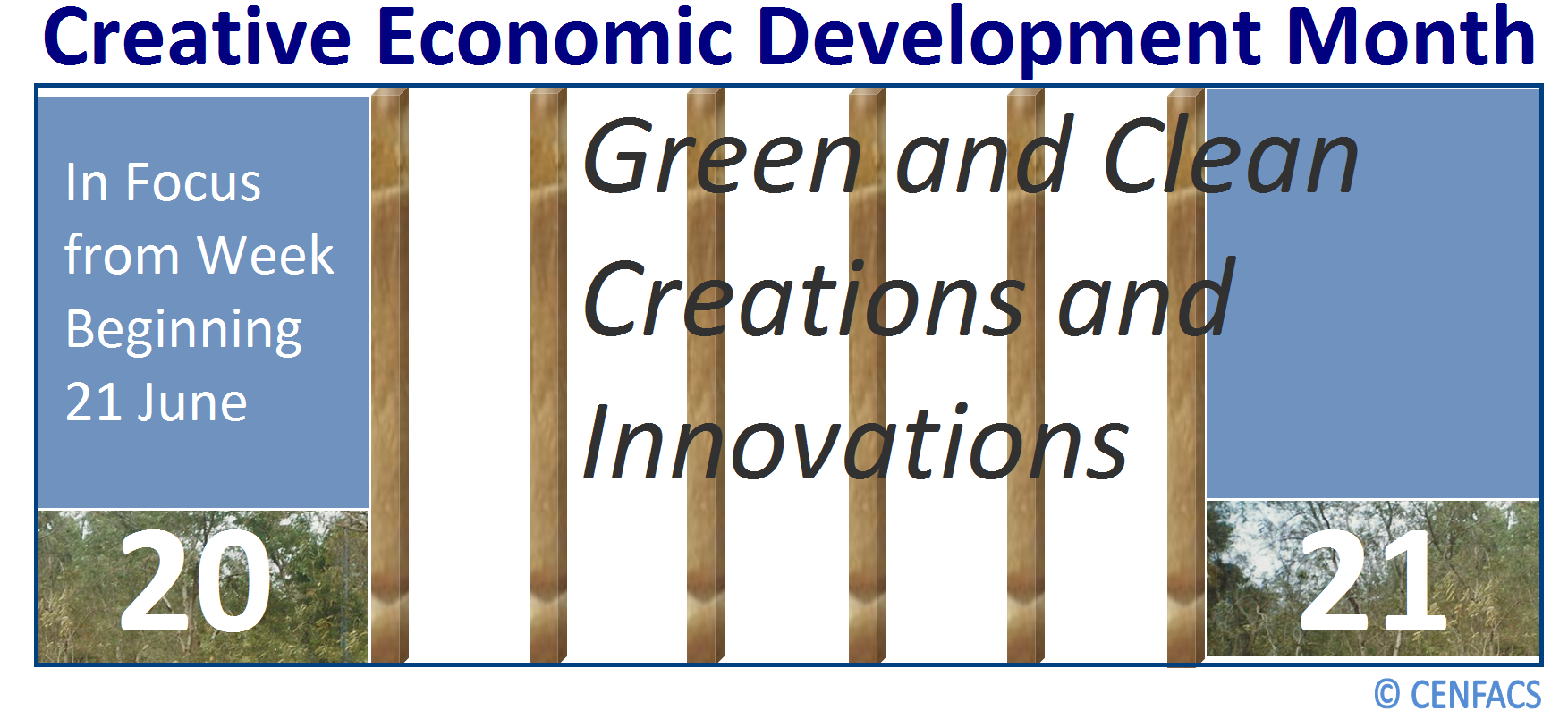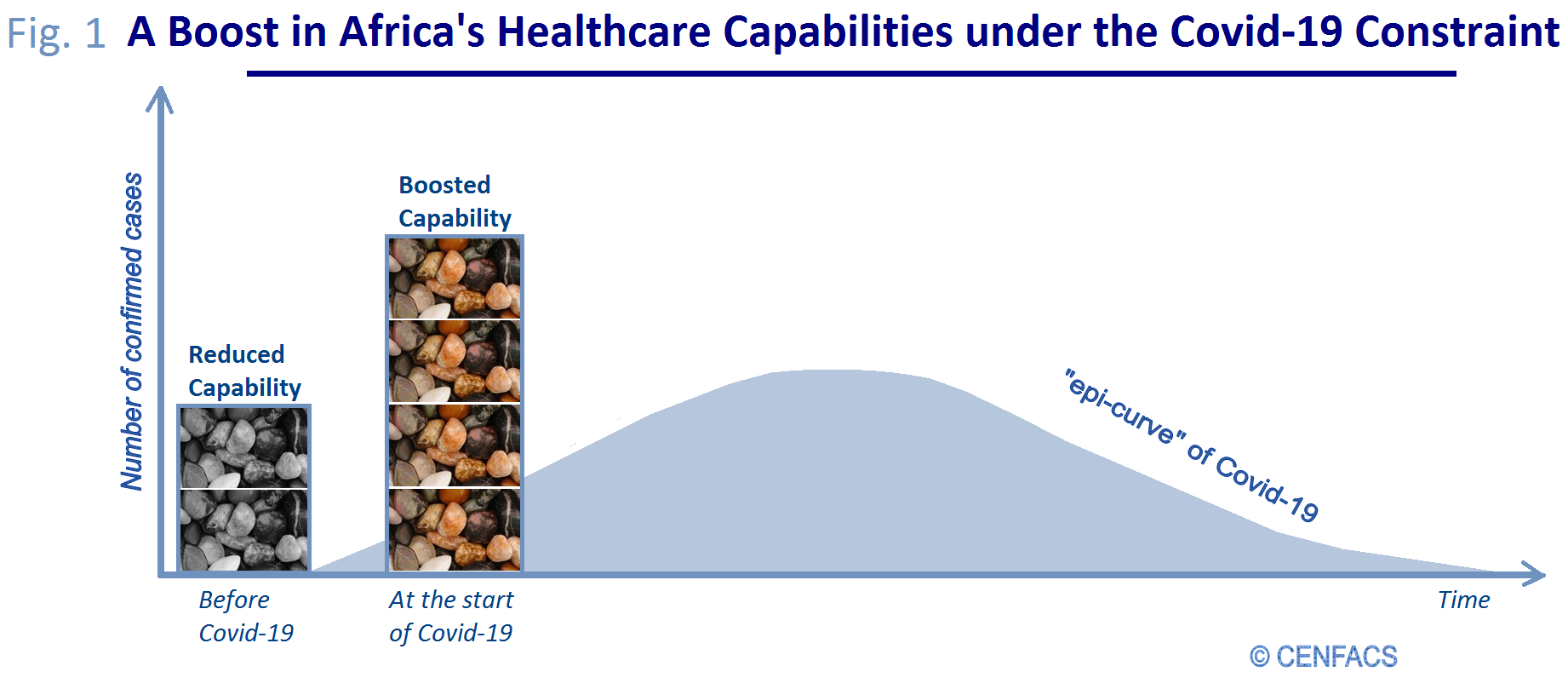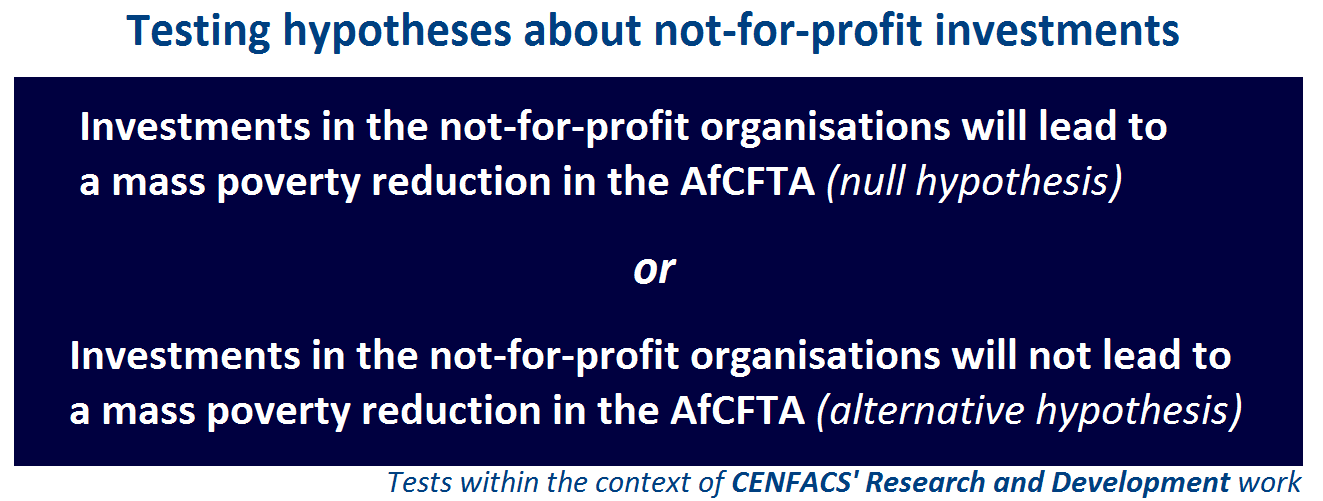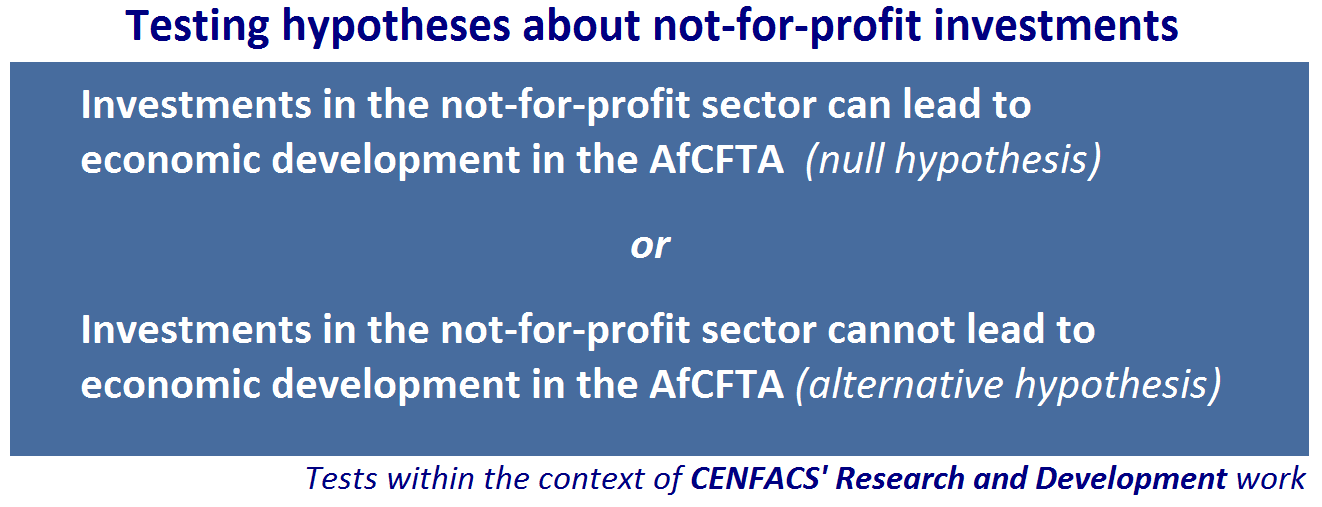Welcome to CENFACS’ Online Diary!
23 June 2021
Post No. 201
The Week’s Contents
• Research and Development to Build Forward Better Together
• Creative Economic Development Month – In Focus for Week Beginning 21/06/2021: Green and Clean Creations and Innovations.
• Distress-free Life from Enduring Coronavirus for Children, Young People and Families in Africa
… And much more!
Key Messages
• Research and Development to Build Forward Better Together
To build forward better from the coronavirus pandemic, it requires research and development. And research and development are at the heart of everything we do at CENFACS.
We are researching for new ideas to better help reduce poverty amongst our users in the community and Africa-based Organisations making part of our area of operation in Africa. We are as well researching for new ways of applying ideas to better help reduce poverty and hardships amongst the same beneficiaries.
To be practical, we are currently researching on the Economics of Not-for-profit Solutions to Poverty, in particular but not specifically to COVID-19-induced poverty. Under the Main Development section of this post, we have provided further details about this first key message and current research focus.
• Creative Economic Development Month – In Focus for Week Beginning 21/06/2021: Green and Clean Creations and Innovations.
Our delivery of the Creative Economic Development Month continues with the featuring of Green and Clean Creations and Innovations. To feature them, we are going to try to understand their meanings and give some highlights about what our Africa-based Sister Organisations are doing in terms them.
• • Understanding of green and clean creations and innovations
The following summarises our apprehension of green and clean creations and innovations.
• • • Green creations and innovations
Green creations are processes or actions of bringing something into existence and do not or cause less harm to the environment.
Green innovations are about making changes in established things without or with less harm to the environment.
So, green creations and innovations are those which ensure that natural assets continue to provide the resources and environment services on which human and other beings rely upon.
• • • Clean creations and innovations
Clean creations are about generating new and unique ideas on things that are free from harmful substances or effects to health, life and the nature.
Clean innovations are about executing the creative ideas into practice that does not cause harmful fallout or contamination to human life and the nature.
Thus, clean creations and innovations are those that reduce greenhouse gas emissions and negative environmental impacts through efficient use of natural and few non-renewable resources.
Briefly speaking, the interest in this week of the Creative Economic Development Month is on creations and innovations that are environment-friendly (that is, they have a small or zero environmental impact) and reduce waste in the nature. We are as well interested in creations and innovations that lower emissions of greenhouse gas, reduce climate-damaging carbon dioxide emissions, spearhead green energy solutions and increase the share of renewables in the energy mix in the process of creating and innovating for life, work and future.
• • Africa-based Sister Organisations’ Green and Clean Creations and Innovations
There are many green and clean creative and innovative initiatives carried out by our Africa-based Sister Organisations. Amongst them, we can mention the ecological site run by one of our African partners in Togo. The initiative included: education and training, growing of young seedlings in greenhouses (e.g. planting peppers in greenhouses and eggplant in new greenhouse), experiment, etc.
This ecological site is an experience of environment-friendly initiative that is aligned with greenhouse gas emissions reduction goals and targets. It is a good example of how to grow plants without depleting natural resources.
For more information about this initiative and other similar works carried out by our Africa-based Sister organisations, please contact CENFACS.
• Distress-free Life from Enduring Coronavirus for Children, Young People and Families in Africa
Distress-free Life from Enduring Coronavirus for Children, Young People and Families in Africa is one of the Summer Appeal projects making the first part of our Summer Programme, which will be published soon. This appeal has been already launched.
The appeal is about supporting children, young people and families (CYPFs) in places in Africa where healthcare systems are vulnerable and weak, and cannot cope with the mounting pressure and damaging effects of the Covid-19.
Supporting this appeal means helping CYPFs to minimise and mitigate the impacts of Covid-19 on them. Your support will help to reduce the risks stemming from the economic and health threats that have been caused by Covid-19. One can think of a child or young person without any dreams and expectations, what will be his/her future.
Can you help this child? Yes or No!
If you say yes; then…
√ You can help that child to dream and expect for a better life and future.
√ You can help stop Covid-19 to become a structural constraint and handicap for that child.
√ You can help stop Covid-19 to create lifelong impacts on children and young people.
√ You can help stop children’s and young people’s lives being reduced back below the poverty line.
√ You can stop the lost generation of Covid-19 or “the pandemial generation” to happen in Africa.
To make the above happen, support Distress-free Life from Enduring Coronavirus for Children, Young People and Families in Africa.
Details of this appeal and ways of supporting can be found at: cenfacs.org.uk/supporting-us/
Thank you for helping CENFACS IN ENHANCING AND SUSTAINING FREEDOMS AND CAPABILITIES BY WORKING IN ALLIANCE WITH LOCAL PEOPLE TO DEVELOP SUSTAINABLE INITIATIVES.
Extra Messages
• Thanksgiving Days: Supporters’ Days (28 to 30 June 2021)
From 28 to 30 June 2021, we will be thanking all our supporters (current and past ones).
We would like to take the opportunity of the end of June to thank them (and you if you are one of them) for helping CENFACS IN ENHANCING AND SUSTAINING FREEDOMS AND CAPABILITIES BY WORKING IN ALLIANCE WITH LOCAL PEOPLE TO DEVELOP SUSTAINABLE INITIATIVES.
• • What do mean by Thanking Days or Supporters’ Days?
These are Special Days of Thank You we would like to dedicate to all those who contributed to our work for any types of support they have given us over this financial year. This dedication is normally held in the last week of and by the end of June. For this year, Thank-you Days will be held from 28 to 30 June 2021.
As we are in CENFACS’ Creative Economic Development Month and Leafy Year, we shall find all sorts of creative, innovative and communicative ways of thanking our invaluable supporters and backers. These thanking ways may include the following:
√ Conversing with our supporters over phones
√ Signing and sending thank-you prints or e-cards to them
√ Telling them the stories or outcomes about the people and communities they helped through their support
√ E-mailing, texting and tweeting them with messages of gratitude
√ Telling and sharing thank-you stories
√ Playing and listening with them music and songs of thank you
√ Making and playing thank-you videos and films
√ Giving back to them by volunteering our time to the cause they deeply care about
Undertaking a free translation service (French to English and vice versa)
√ Reading African poems and poetry
√ Sending to them digital and technologically animated thank-you messages
√ Doing creative and design works symbolising thank you
√ Sending designed and hand crafted made objects and crafts of acknowledgement
√ Making video calls since the coronavirus pandemic and its associated impacts continue to restrict some forms of physical contact, etc.
If you are one of the CENFACS’ supporters, please we would like to let you know the Thanking Days at CENFACS are your Days. Do not hesitate to get in touch, if you do not mistakenly hear from us. We will welcome you; reconnect with you and thank you on the occasion for the helpful difference you made to our work and project beneficiaries.
Your invaluable support has meant a lot for our programme and project beneficiaries over this ending financial year.
We would like to express all our sincere gratitude to you for helping us to help reduce poverty.
For further details, contact CENFACS’ Thanksgiving-End-of-June-2021 Team.
• Arts and Design Project –
In Focus: Unknown and Unnamed Artists and Designers of Poverty Relief and Sustainable Development with the example of Young Creators and Innovators
Artists and designers play an active role in helping to reduce poverty and enhance sustainable development. So, this week we are working on some of the works carried out by artists and designers especially those from small scale and charitable backgrounds, the local arts and design products and services undertaken by local people and communities sometimes to make ends meet.
These kinds of work can include those carried out by poor families, children, young people and those who are left out of the economic growth or upturn. Additionally, there are works carried out by unknown and unnamed artists and designers who may be amateurs or not professionals or not just celebrities. Every year, we try to find out unknown and unnamed artists and designers, as part of Arts and Design Project.
All these small pieces of art and design works can help relieve poverty and enhance the process of sustainable development. They can help build forward better during this pandemic time.
• • Example of Unknown and Unnamed Artists and Designers: Young Creators and Innovators
Some Young Creators and Innovators can be classified as unknown and unnamed artists and designers. They are of all sorts of talents and abilities who can create and innovate to reduce poverty and enhance sustainable development. They can as well help to build forward better from the coronavirus pandemic. Their works can help reduce Covid-19 induced poverty and hardships while keeping the progress of the realisation of sustainable development goals. They could be the finders of the today’s solutions for tomorrow’s problems.
So, this week we are continuing our Arts and Design project by looking at the contribution that unknown and unnamed artists and designers, and amongst them are Young Creators and Innovators, are making in reducing poverty and hardships as well as in enhancing sustainable development.
If you are a young creator and/or innovator and has some feeling that you would probably fall under the category of unknown and unnamed artists and designers, CENFACS would like to hear from you as well as your creative/innovative work.
• Africa’s Healthcare Capabilities in face of COVID-19 Rebound
One year ago, we argued about the need to boost Africa’s healthcare capabilities in order to shadow the evolution of the epidemiological curves of the coronavirus pandemic. This argument was part of our COVID-19 Campaign and Advocacy on Rebuilding Africa.
This week, we are examining if African countries succeeded in allocating 1% or more of their gross domestic product to health. We are indeed looking at if they boosted their health capacities since there has been a rebound of COVID-19 infection in many places in Africa.
Those who will be interested in this issue of Africa’s healthcare capabilities, they can feel free to let us know. Likewise, those who have data or more information about investments in health care capabilities in Africa, they can – if they want – share them with the community and CENFACS.
To discuss or share data on Africa’s healthcare capabilities, please contact CENFACS.
Main Development
• Research and Development to Build Forward Better Together
To build forward better together, we are going to consider the following items making our research and development work.
• • Research and Development within CENFACS
The function of research and development (R&D) is important within CENFACS. This is because we can only help to reduce poverty and enhance sustainable development if we are able to undertake research and develop solutions together with local people to poverty reduction and to the enhancement of sustainable development. In this respect, the kinds of research and development work we do are related to the core activities of poverty reduction and sustainable development.
In the context of this year’s Creative Economic Development Month, we are carrying on research and development related to coronavirus-induced poverty and hardships on the one hand, and the delay or prevention caused by Covid-19 in the progress of the realisation of sustainable development goals on the other. This is the general scope of our research and development work.
Within this scope, we are currently working on the Economics of Not-for-profit Solutions to poverty, in particular but not specifically to COVID-19-induced poverty. We are researching these solutions in the context of African Continental Free Trade Area. However, before going any further in the presentation of research and development, let us define the economics of not-for-profit solutions to poverty.
• • What is the economics of not-for-profit solutions to poverty?
To understand the economics of not-for-profit solutions to poverty, one needs to first understand economics. To comprehend economics, we are going to refer to the basic dictionary of economics by Christopher Pass, Bryan Lowes and Leslie Davies (1). C. Pass et al define economics as
“The study of the problem of using available factors of production as efficiently as possible so as to attain the maximum fulfilment of society’s unlimited demands for goods and services. The ultimate purpose of economic endeavour is to satisfy human wants for goods and services… whereas wants are virtually without limit, the resources – natural resources, labour and capital – available at any one time to produce goods and services, are limited in supply; i.e., resources are scarce relative to the demands they are called upon to satisfy” (pp. 153 & 154)
From the above definition, one can deduct that the economics of not-for-profit solutions to poverty is the study of the allocation of resources and of choices made by not-for-profit organisations providing solutions that do not seek to make profit in order to resolve the problem of lack of money and material possessions. Because resources (especially natural ones) are scarce and non-renewable, one can make not-for-profit choices in order to satisfy the demand of those in need, especially in most pressing and urgent needs like the ones led by the coronavirus pandemic.
• • Research on the Economics of Not-for-profit Solutions to Poverty
As part of research and development of the month of Creative Economic Development, we are going to share with readers of this post the current work we are conducting in terms of Investing in the Not-for-profit Organisations (N4POs). The coming Issue of FACS (Issue no. 72) will give more information about the investments in the not-for-profit organisations in Africa.
In meantime, let us argue that the current work is about how investing in the N4POs can contribute to further poverty reduction and long term economic development in the African Continental Free Trade Area. The positive long term expected effects or outcomes from this kind investment will include the following:
jobs creation, boosting and development of products and services, support to the green and blue developments, building forward better lives from the coronavirus pandemic, natural resources management and conservation, etc.
As part this study, we are looking at data in investments in the not-for-profit economies in Africa as well as working on two assumptions or tests.
• • Testing hypotheses
The first Test is that investing in the not-for-profit organisations in Africa can lead to poverty reduction in bulk or mass poverty reduction. However, for this to happen, the following conditions need to be met:
∞ Better money governance; that is money invested has to be allocated to lifting people out of poverty not to paying high salaries to those who run those N4POs
∞ There should be no or less disruptive events (such as civil wars, conflicts, natural and health disasters, etc.)
∞ There should also be creative productive capacities to reduce over-dependency over not-for-profit investors in the long term
∞ Investments made should be in line with greenhouse gas emissions reduction programmes, goals and targets
∞ The transformation of consumption spending into production spending needs to be part of a long term plan.
Everything remaining equal if these conditions are respected, the model of reducing poverty in bulk could continue over time.
The second or alternative hypothesis is that investing in the not-for-profit in Africa will not lead to mass poverty reduction in Africa. There are many factors militating en favour of this position which include the following: the level of development of economies forming the African Continental Free Trade Area, the deep scars left by the coronavirus, the infancy or embryonic state of the African Continental Free Trade Area itself, etc.
In both tests, causality and attribution approach, quantitative and qualitative techniques and methods will be used. For example, quantitative techniques and methods can be used to test if there is a correlation between mass poverty reduction in the post-pandemic era and investment in N4POs. The same or similar techniques and methods can also be used to determine the relationships between investment in N4POs and their long-term economic development in the African Continental Free Trade Area.
By economic development, we mean what C. Pass et al. (op. cit.) define as
“A process of economic transition involving the structural transformation of an economy through industrialisation and raising of gross domestic product and income per head” (p. 149)
For further details and or enquiries about this Research and Development activity, please do not hesitate to contact CENFACS.
_________
Reference
(1) Pass, B. Lowes and L. Davies (1988), Dictionary of Economics, HarperCollins Publishers, Collins Reference, London & Glasgow
_________
Help CENFACS keep the Poverty Relief work going this year.
We do our work on a very small budget and on a voluntary basis. Making a donation will show us you value our work and support CENFACS’ work, which is currently offered as a free service.
One could consider a recurring donation to CENFACS in the future.
Donate to support CENFACS!
FOR ONLY £1, YOU CAN SUPPORT CENFACS AND CENFACS’ PROJECTS, JUST GO TO http://cenfacs.org.uk/supporting-us/
Thank you for visiting CENFACS website and reading this post.
Thank you as well to those who made or make comments about our weekly posts.
We look forward to receiving your regular visits and continuing support throughout 2021 and beyond.
With many thanks.
